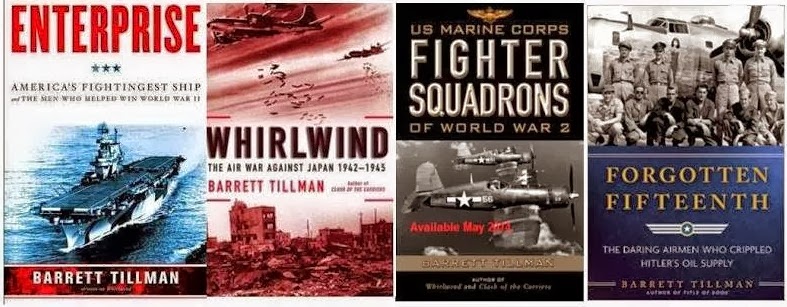Earlier this month a five-year campaign drew to a successful end. It resonated over a period of more than half a century, dating from the spring of 1965. The result is Dragon’s Jaw: An Epic Story of Courage and tenacity in Vietnam.
My friend, colleague and unindicted co-conspirator Stephen Coonts is a former U.S. Navy attack pilot, Vietnam veteran, and immensely successful novelist. Most of his books have earned their way onto the New York Times’best-seller list, starting with his smash 1986 debut Flight of The Intruder, later a successful movie.
Steve and I shared our first publisher, Naval Institute Press in Annapolis, and when I was asked to evaluate his original manuscript, I told the editor, “This book is so good that if you don’t publish it, I will.” Things proceeded from there, and Steve has kindly included me in three of his anthologies including the fiction compilations Victoryand Combat.
As they say, time passed. Then one afternoon in April 2014 Steve phoned with a question: would I like to work with him on the full story of Thanh Hoa Bridge?
That was akin to asking J. Edgar Hoover if he would have liked to arrest Jimmy Hoffa. (And if you don’t recognize either name, you’re encouraged to do some XX century googling.) My response was not just Yes but Hell Yes!
Some background:
Thanh Hoa Bridge was the most notorious target in Southeast Asia during the Vietnam War (1964-1973 or 1975, depending on one’s definition). About 70 miles south of Hanoi, it was one of the two most important spans in North Vietnam, the other being the Long Bien Bridge crossing the Red River in Hanoi. Both were critical links supporting the North’s enduring campaign to funnel men and supplies from China and the port of Haiphong into South Vietnam, America’s erratic ally. And both were extremely well defended.
Because of Than Hoa Bridge’s rocky anchors either side of the Song Ma, resembling giant jaws, the Vietnamese had long dubbed the area the Cầu Hàm Rồng. And so it became famous—and infamous—as the Dragon’s Jaw, completed in 1964.
In that first conversation I told Steve that I had started a Thanh Hoa file about 25 years before, when managing editor of the Tailhook Association journal. I’d heard various estimates of the number of U.S. aircraft shot down attacking the bridge, as high as 100+. So, with a fading printout of American fixed-wing aircraft shot down in Southeast Asia, I was confronted with nearly 3,000 entries. The task was somewhat simplified because President Lyndon Johnson, the frustrated Texas arm-twister, called off bombing North Vietnam in 1969 and it was not resumed until Richard Nixon ran out of patience three years later. But even then, I had to peruse about 1,700 combat losses, seeking Thanh Hoa targets.
So we had the bare-bones skeleton of our book. Steve and I easily reached an agreement—after all, one of his previous careers was the law—and away we went. I would research the story, write a first draft, and then Steve would expand the text and sprinkle his literary pixie dust. His agent sold our proposal to Da Capo Press for manuscript delivery in the fall of 2018, working around Steve’s fiction obligations. In that time I finished or began four projects of my own. In a word, we were busy.
In all we consulted about 70 contributors representing the U.S. Air Force, Navy, Marine Corps, civilians, and Vietnamese. They included a well-connected American structural engineer who had worked in Vietnam; the Air Force colonel who led the first two Thanh Hoa missions in 1965; a future U.S. vice presidential candidate and other long-term POWs; the Navy pilot who probably flew more Dragon’s Jaw missions than anyone; the Phantom leader whose laser-guided bombs crippled the span in May 1972; and the naval aviator whose flight slew the Dragon that October. Thanks to a couple of extraordinarily generous scholars, we obtained original material from North Vietnam, much of which had never been seen.
Early on, Steve and I realized that we had more than a gripping combat flying story. The bridge became a microcosm of that entire “Crazy Asian War” in all its insanity, courage, pride, and grief. It was as if the Dragon’s Jaw were an inanimate 20th century Grendel, the fearsome, lurking monster of the classic Icelandic Beowulf saga. More than that, the overdesigned, overbuilt span represented what literature majors term a deus ex machina—a convention from ancient Greek sagas that brings players into the story.
And we found something more. Most of our contributors had waited half a century for someone to ask them to share their portion of the Thanh Hoa story. It was as if Steve and I became their voices, which came spilling out of phones, tape recorders, and emails. It wasn’t merely that Vietnam was their war—often the bridge was their enduring identity in that ill-conceived, misdirected, doomed endeavor. But at the same time they retain the fierce pride of accomplished warriors with shared skill in the profession of arms, and most of all—trust in one another. Dragon’s Jawis their legacy, and Steve and I were privileged to record it.
We wanted the book to be about more than bombs falling and planes shot down. We thought the context was crucial, so Steve immersed himself in the history of the war, trying to boil it down so that the contest didn’t overpower the story. As Steve concludes, “We think we got enough of the political overview of the Vietnam War and peace efforts so that the intermittent campaign against the bridge makes some kind of sense. Believe me—it didn’t at the time.”



